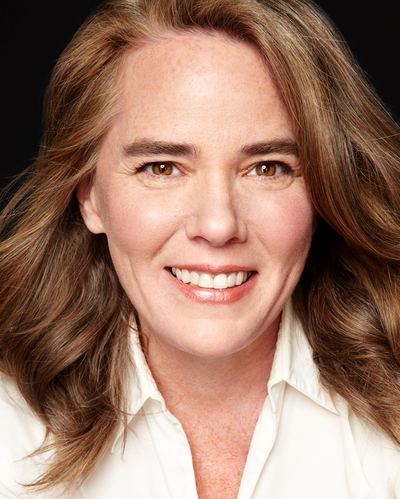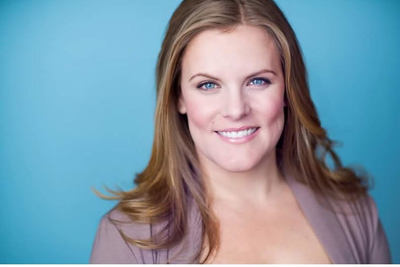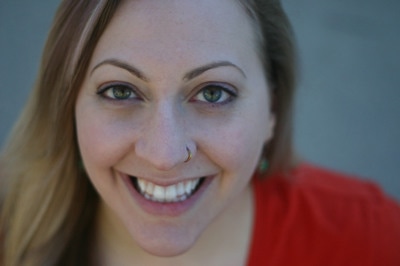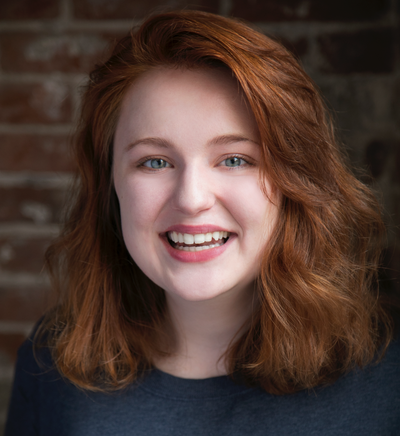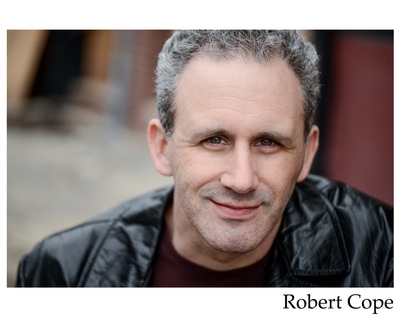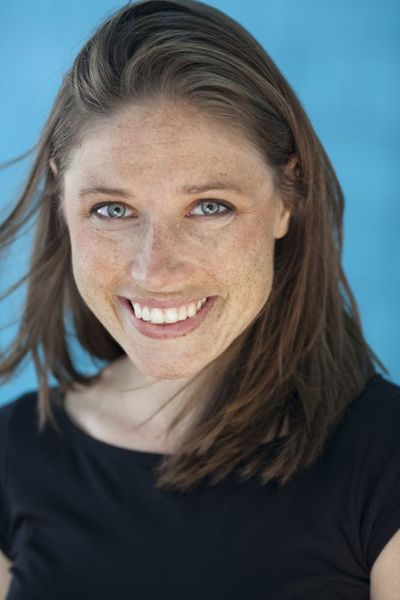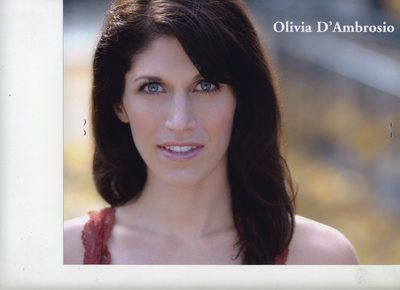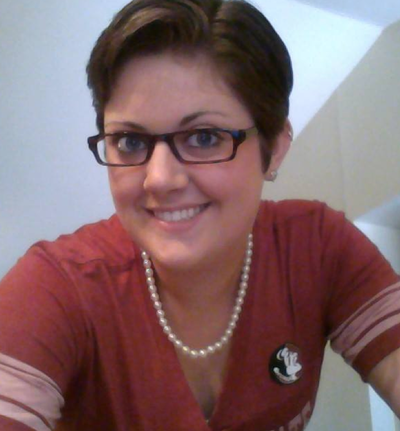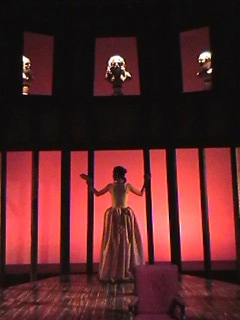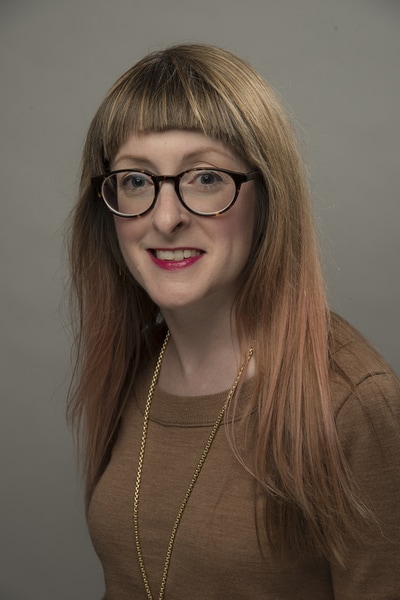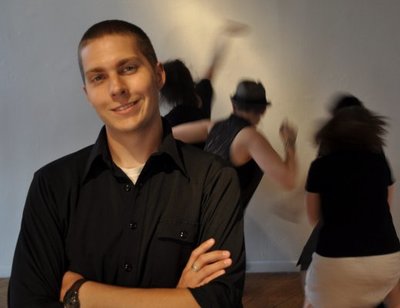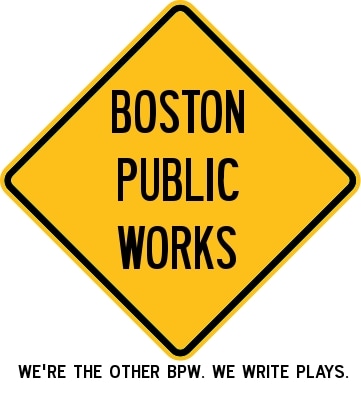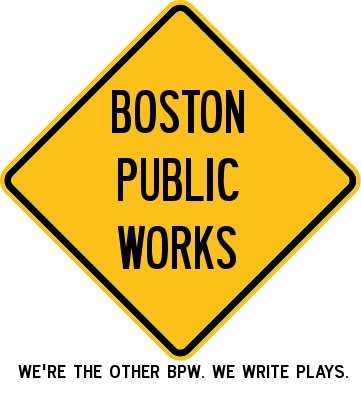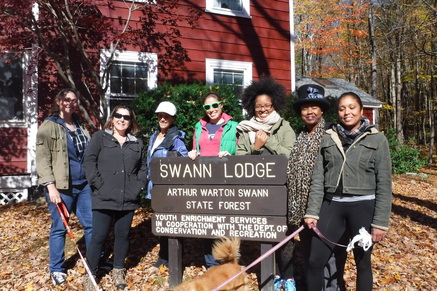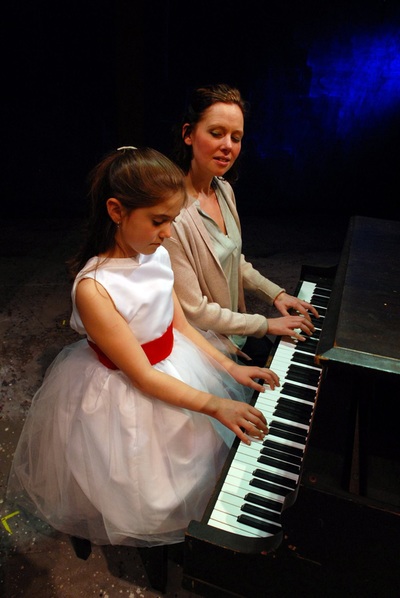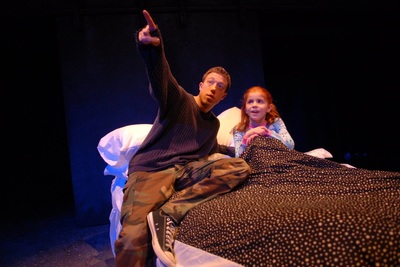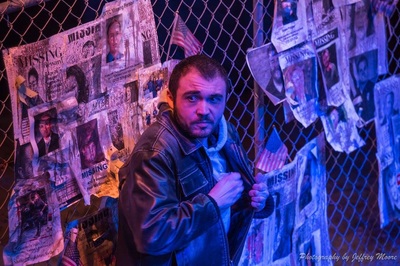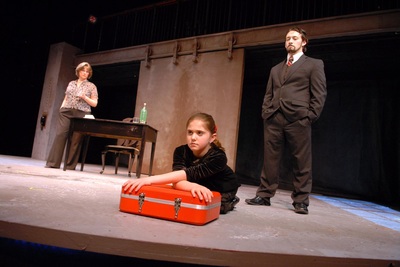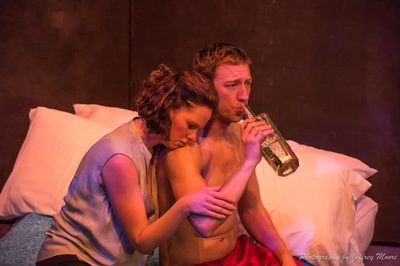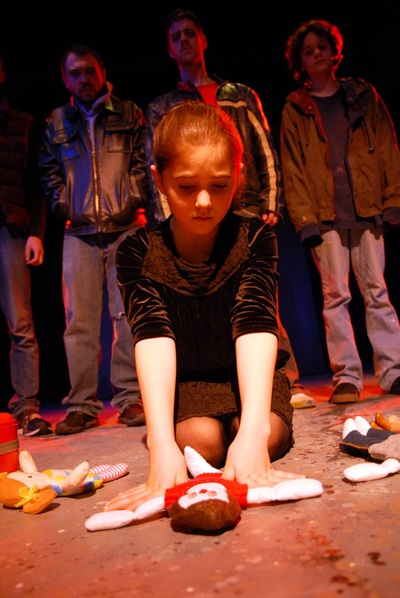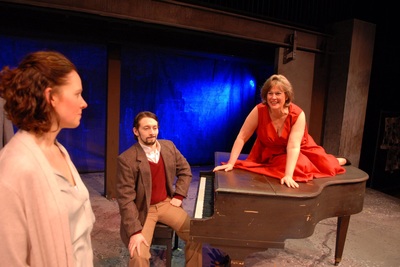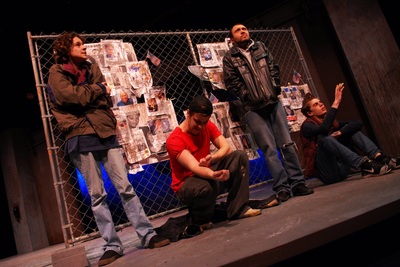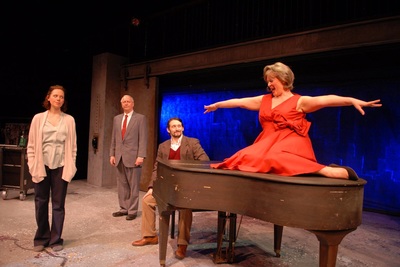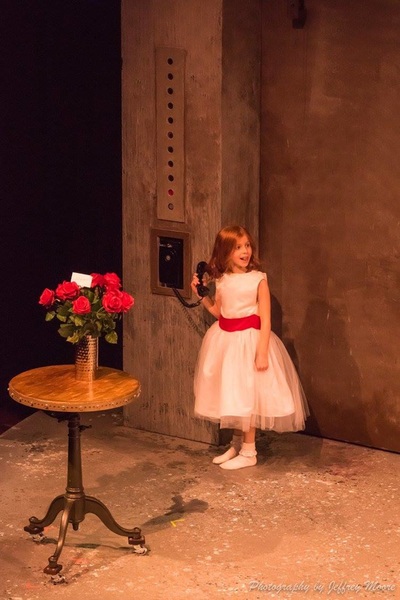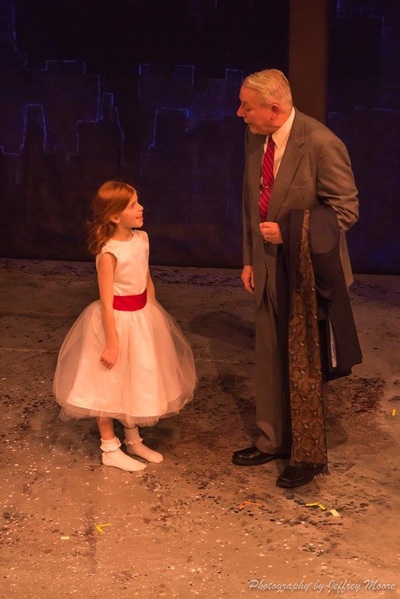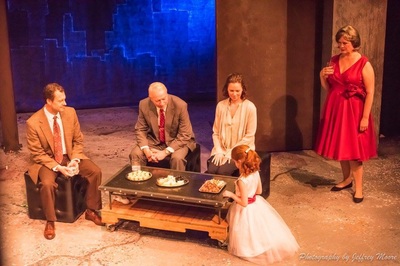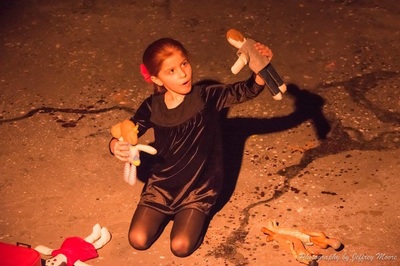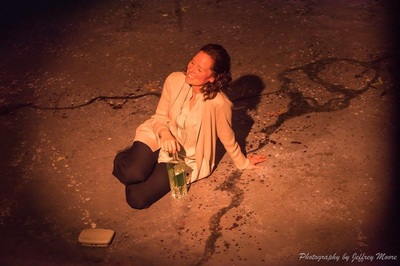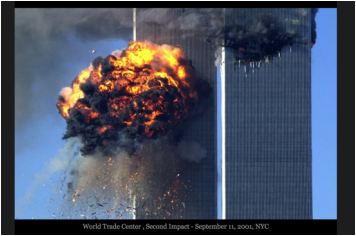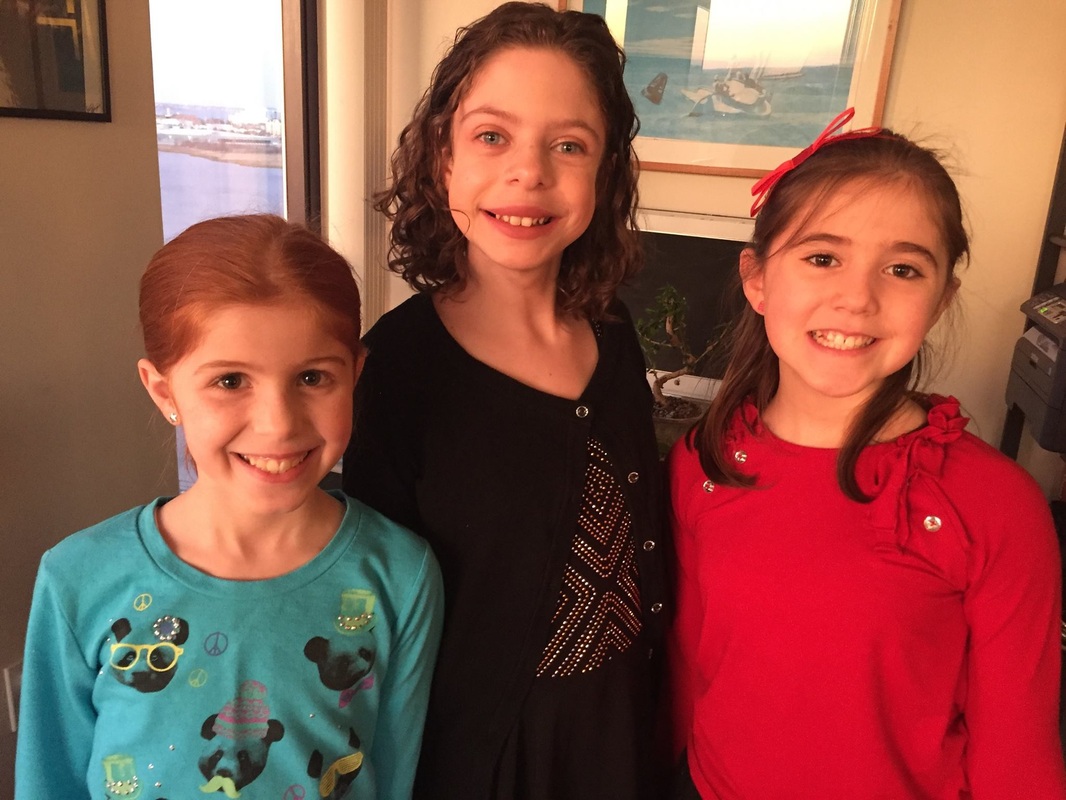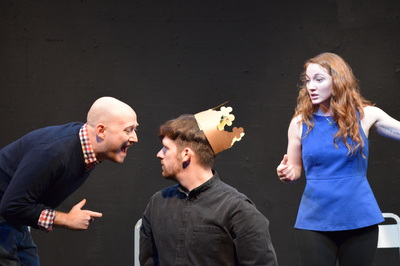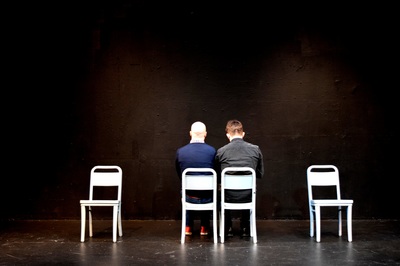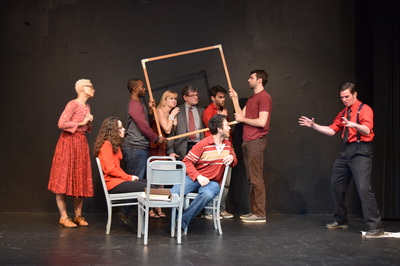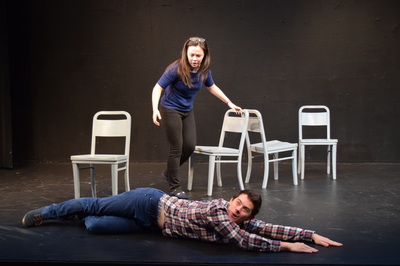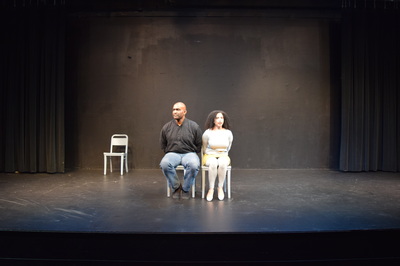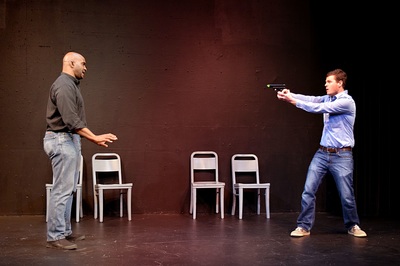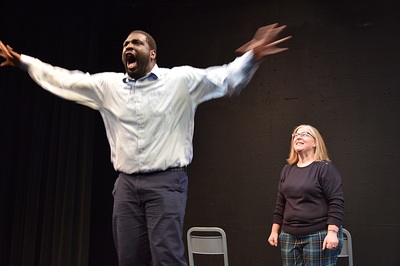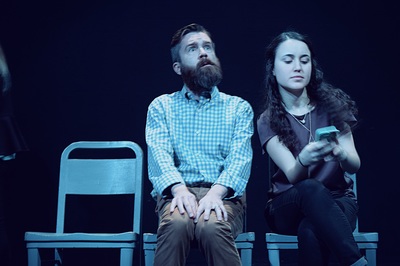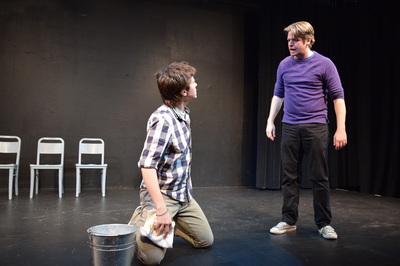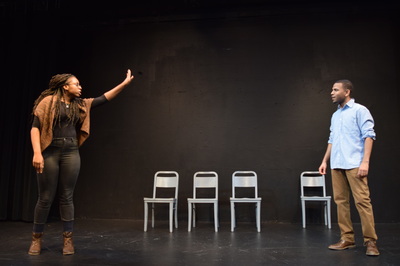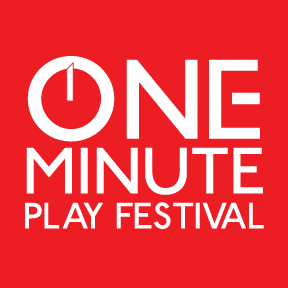 Tyler Monroe, Dramaturg
Tyler Monroe, Dramaturg Laura is her own architect. She starts with a blueprint of what will eventually be her play. Looking at her blueprint, it's clear she has a vision for what the play will ultimately become, though there's flexibility and room for interpretation within it. Reading through the blueprint gave me a great idea for the story she wanted to tell, but the walls or the windows weren’t present, just yet.
This playwright pours her own concrete foundation. The first draft of Los Meadows is very much the foundation upon which the rest of the play was built. Like pouring concrete, laying a strong foundation for a play is messy and exacting work, but necessary. The first draft of a play is often the hardest to finish. Much of Laura’s first draft is not visible now in performances, but without this foundation, the rest of the process could not be built upon.
Next, Laura assumed the role of framer, carefully building upon her foundation with subsequent drafts. In between drafts, I would consult with Laura on how her play was being built. I would provide her with observations and talk through the challenges she still saw as the joints were being fitted together and the load-bearing scenes were being driven into the ground. It was during these subsequent framings that the shape of Los Meadows came into view. I began to understand the arc of this family, the structure of this story, and the emotional complexity of each character.
Sometimes though, construction doesn't go according to plan, and that's when Laura-as-demolition-crew came in. When a scene wasn't working or a draft missed her initial vision, Laura was never afraid to revise using a bulldozer and wrecking ball, completely breaking down the draft in order to rebuild a play more in line with the vision she set out. This requires an immense amount of flexibility and focus. Many playwrights, myself included, view revising a play like playing Jenga: One small change may cause the entire structure to tumble to the ground. Laura embraces dramatic change. She would often be astonished me with how much changed between drafts of Los Meadows, giving a new version of the play.
And finally, with drafts that were crafted after rehearsals started, Laura was the consummate finisher. After the structure was framed and the walls hung, she applied paint, hung lighting fixtures, placed trim, and laid the floors to her play. These were the touches that stand out most to a viewer, and Laura was tireless in crafting memorable details for the Los Meadows audience. Small clarifications or character beats were constantly layered into her play as actors, designers, and the director stepped into the room. All the while, the play began to look more and more like a lived-in building with nuanced details and sharper moments.
As a dramaturg, it has been a pleasure watching Los Meadows take shape before my eyes. The end result is a beautiful building of a play that I hope you will enjoy as the last production of Boston Public Works Theater Company's at the Boston Center for the Arts.
Tyler J. Monroe is a dramaturg, playwright, and educator in the Boston community. He obtained his MFA in dramaturgy from the ART/MXAT Institute for Advanced Theatre Training at Harvard University where his adaptation of The Snow Queen appeared on the Loeb Drama Center’s main stage. His adaptation of Edgar Allen Poe’s work, Tales of Poe, was a part of New Repertory Theatre’s New Rep on Tour series. The Maritime Project, his mash-up of the Grimm Brother’s The Fisherman and His Wife, received a workshop production at the Charlestown Working Theatre, and his original play, Cheating Heaven, was developed through Whistler in the Dark’s Playwright Incubator Program. As a dramaturg, he has assisted with many productions across town including plays at the American Repertory Theatre, Fresh Ink Theatre Company, Company One, and through Boston Public Works Theater Company. During the day, Tyler teaches 7th grade English language arts at the Edward Brooke Charter School before he goes home to be a daddy to Atticus.

